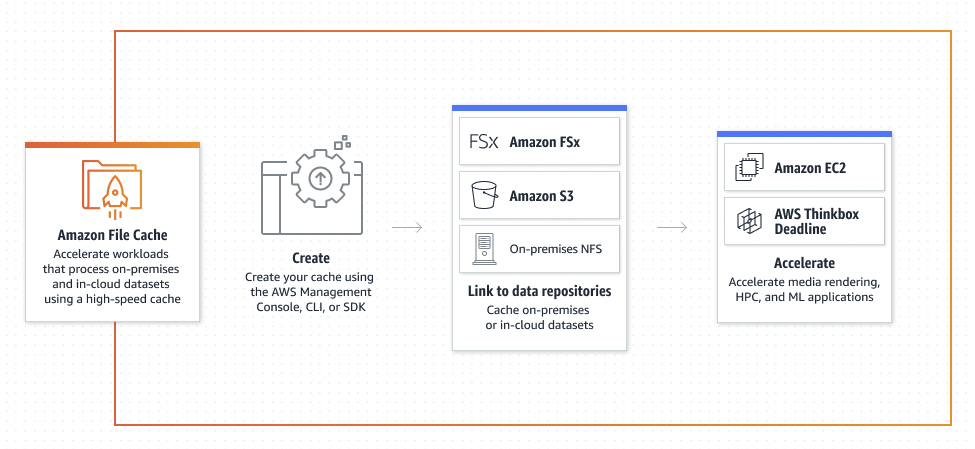AWS Announces Amazon File Cache

Amazon File Cache, a new high-speed cache service on Amazon Web Services (AWS) was announced by Amazon in late September. This new AWS offering is designed for processing file data stored in the cloud and on-premises.
“File Cache accelerates and simplifies your most demanding cloud bursting and hybrid workflows by giving your applications access to files using a fast and familiar POSIX interface, no matter if the original files live on premises on any file system that can be accessed through NFS v3 or on Amazon Simple Storage Service (Amazon S3),” Amazon explained in the announcement.
Amazon File Cache delivers sub-millisecond latencies, up to hundreds of GB/s of throughput, and up to millions of operations per second. The performance it delivers will depend on the size of the cache: It can be expanded to petabyte scale, with a minimum size of 1.2 TiB.
How Amazon File Cache works
Amazon File Cache creates a file system–based cache in front of either NFS v3 file systems or S3 buckets in one or more regions. It transparently loads file content and metadata from the original file system and presents it to your applications as a POSIX file system. It also automatically releases the less recently used cached files to ensure that the most active files are available in the cache for your applications.
You can link up to eight NFS file systems or eight S3 buckets to a cache, and they will be exposed as a unified set of files and directories. You can access the cache from a variety of AWS compute services including virtual machines and containers. The connection between the Amazon File Cache and your on-premises infrastructure uses either AWS Direct Connect and/or Site-to-Site VPN.

Amazon File Cache provides two options for importing data into the cache: lazy load and preload. Lazy load imports data on demand if it’s not already cached, and preload imports data at user request before you start your workload. Lazy loading is the default.
There are no fixed-price costs for File Cache. You are billed for the provisioned cache storage capacity and metadata storage capacity. You can learn more details at Amazon File Cache Pricing. In addition to File Cache itself, there could be costs for S3 requests, AWS Direct Connect charges, or data transfer charges for inter-AZ, inter-Region, and Internet egress traffic between File Cache and the data sources.



